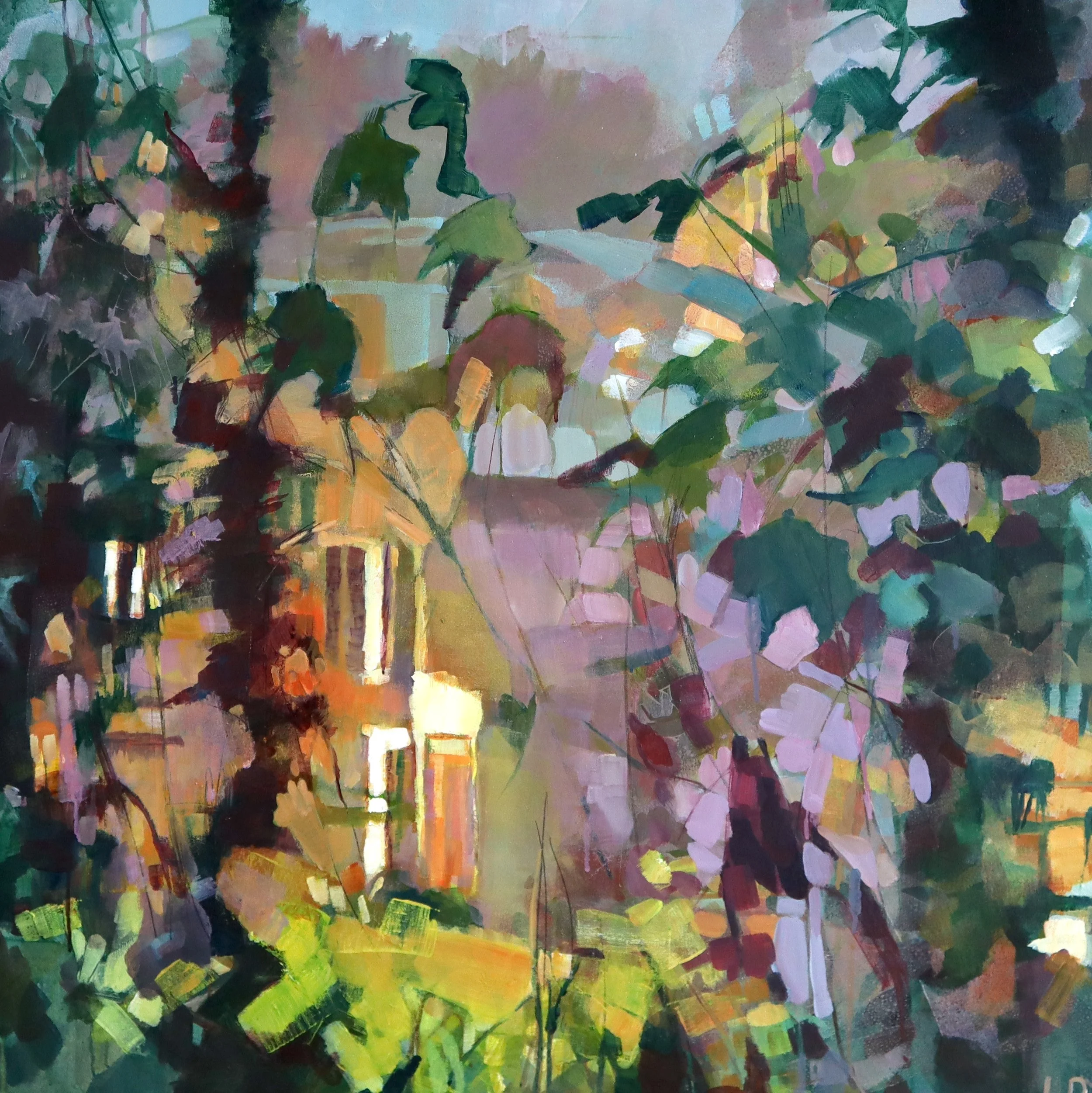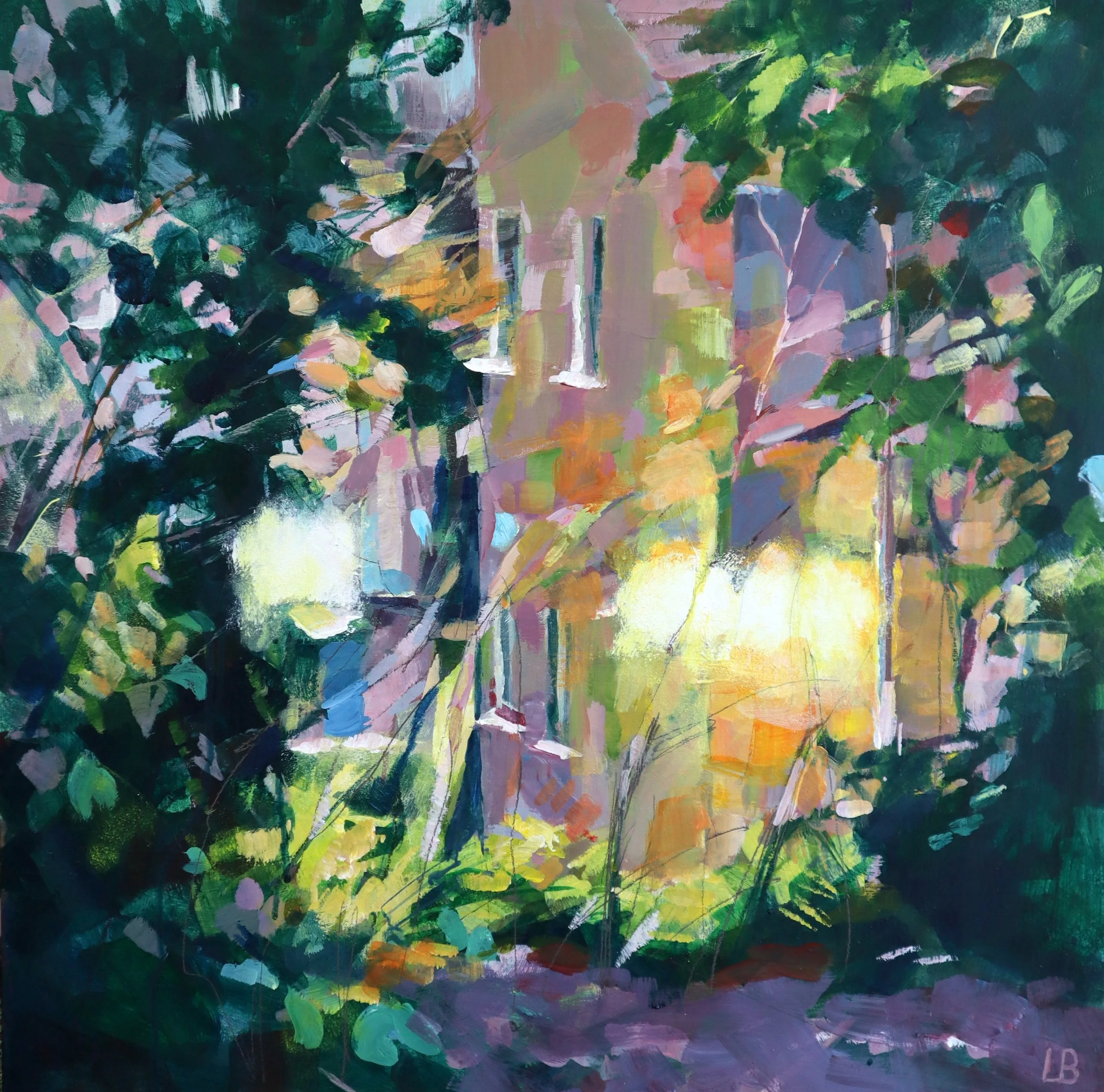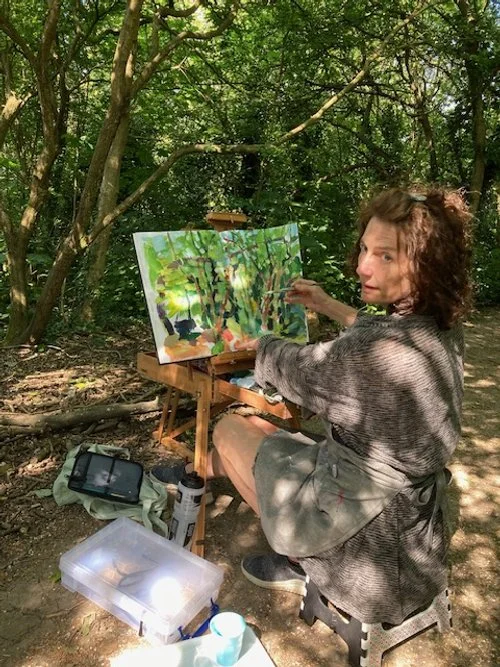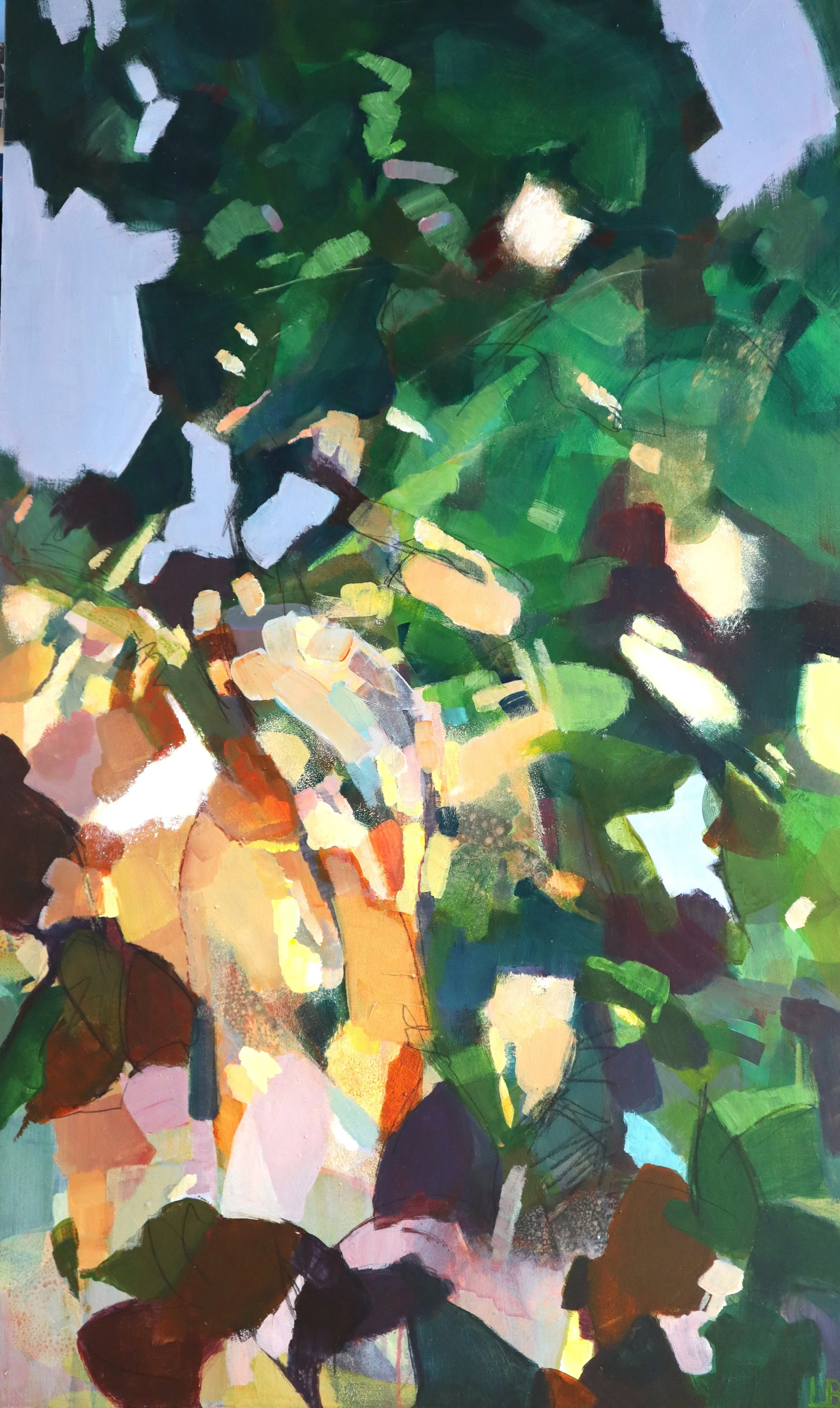ARTIST INTERVIEW: Lucy Bristow
Tell me about yourself. How have you turned your passion for art into a career? What initially sparked your interest in becoming an artist?
I have always enjoyed painting. As a small child I would spend hours absorbed in various pictures in books, trying to copy them exactly. I would sit and draw and paint for hours as a child. I loved losing myself in another world. I enjoyed the opportunity and time to do a fine art degree in Bristol in the early 90s. I then moved to London and worked as an illustrator for many years, which enabled me to continue painting without the pressure of selling paintings to pay bills! I have maintained this policy to the present day. Recently, I have managed to balance up my week so that half is my day job (a craniosacral therapist) and the other half is painting. I see them both as a form of connections with other people.
What compels you to paint your surroundings? What is it about the landscapes in the South Downs that you love capturing?
I find moments of excitement with the right mix of compositions and light in a place. It is this spark of excitement that I have an itch to express. I have lived in Brighton for the last 25 years and have consequently got to know the South Downs in this area really well. There’s something about the soft shapes and curves of the hills which is really appealing, and then a sudden surprising straight line where a road or a field may have been built. More recently, I have been exploring how artificial light interacts with natural dusk light. It can appear very confusing to decipher at first, leaving your brain trying hard to work out what your eyes see.
How do you emulate a landscape through your mark making? How does your use of colour reflect the mood?
A landscape builds in my paintings through layering. I am constantly editing my mark making to what feels right. It’s not something I think through in advance very much, it seems to grow out of a seed of an idea. Often a landscape has a mind of its own, like a petulant child, and ends up being something completely different to which I had planned. I have been trying recently to train my brain in not interpreting what I am looking at. If I can do this it makes it much easier to paint, just to notice the shapes and colours.
The use of colour is very important to me and speaks so much as to how I want a painting to feel. My recent series of dusk paintings have a completely different palette to paintings I had previously made. I enjoy trying out new colour palettes.
Thinking about your piece, 'Heavy Questions in my Chest', what was your creative process from start to finish? How did you establish the composition?
This painting was created from memory and a series of photographs taken on a run I do from time to time, on the outskirts of Brighton where council houses meet the Downs. The little blue door was about the only easily distinguishable image. Everything else was a blur of straight lines, harsh light and dark leaves. It felt almost like an unreal stage set. The buildings in these estates all had these big white corner lights dominating all else and masking most other details. I mapped out roughly the composition to start with and then just began the process of layering colours on. Sometimes I mix the paints with a medium to give a more translucent colour. I use whatever is at hand for mark making, any tools or kitchen equipment, sandpaper, decorators rollers etc.
You keep a sketchbook. What is your last sketchbook entry? What drew you to capture this scene?
I have sketchbooks for different reasons. If I am going away I will use one to record my time away, a bit like a diary, a memento of a period of time. Usually it's a view that I like and want to remember, or some colour combos. I can keep a much better memory of somewhere if I paint it rather than just taking a photo. I have other sketchbooks which I may take out with me to paint en plein air, in and around Brighton. These are information gatherers. I draw on these for future paintings, I may take elements from one page and elements from another to put into a painting. I also have quite messy tatty sketchbooks, where I plan out paintings - composition and colour mostly. They are difficult for anyone else to decipher, lots of lines and scribbles, but they make sense to me. I was using one of these last week to plan through some ideas for a new set of paintings.
What does a typical day look like for you in the studio?
I fit time in my studio time around my day job, so I rarely get a full day at it. I work from home, my therapy clients come to the basement floor and my painting happens at the top of the house. I tend to paint in chunks of time, which I prefer. I occasionally get a whole day, but find I am really exhausted by the end of it. I am much more productive if I can do a couple of hours, take a break to see a client, then get a couple more hours later on, and so forth. I often work to music, sometimes a podcast if I need to catch up on something. Sometimes if everything has been particularly busy, I just need silence.
If you could spend a day with any artist; dead or alive, who would it be, and why?
That’s a hard question to answer, there are so many to choose from for different reasons. I have always been drawn to Louise Bourgeois’s work and would have loved to meet her. I find it bravely personal and she seems like an interesting character. I would have loved to hear her stories about the art world, being a female artist and a mother. I am currently lucky enough to spend every other Friday in the company of some fantastic female artists locally. We all meet and paint together in a studio in Hove. We of course do far more chatting than painting. Many of my fellow artists here are a bit older than me and so have some wonderful stories. They are also a very lovely and supportive group of people whose company I cherish.
What has been your greatest achievement so far as an artist? Have you endured any challenges?
My greatest achievement has been to be a finalist in the Jackson’s Art Prize 2024. To have your painting occasionally recognised by someone is very affirming as an artist (despite telling ourselves it shouldn't matter.) I had a big gap in being able to paint, and did very little for about 10 years when I had a young family. It felt like quite an effort to get going again and took a while before building any kind of momentum. I see it as an equivalent to keeping fit, once you stop you have to make more effort to get going again.
What are your future aspirations as an artist?
I would like to get my paintings seen by more people, to be shown further afield. I enjoy connecting with people and try to grow this year on year. Brighton is a great base for meeting artists. I would like to enrol in the TURPS correspondence course next year. I know a few people who have already done so and I hear good things about it. I feel like it's time for a bit of a shake up.
Why do you think art is important in society?
I am ever hopeful that art may have the capacity to change the way somebody thinks about something. Even if it's only one person and in a small way, then it's done its job. It can speak to us intellectually, emotionally and spiritually, all at once. It affects the whole of a human being, from head to toe, rather than just one aspect, in the same way music can. This is a rare thing in our modern day society, so is to be treasured.









